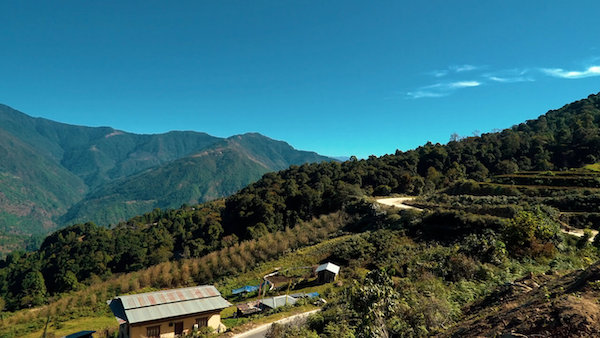
When the world is struggling to reduce carbon emission and looking for effective ways and means to deal with global warming, the tiny landlocked country of Bhutan is not only carbon neutral but have managed to be carbon negative.
The country emits less than 2.5 million tons of Carbon dioxide every year while it is a carbon sink for more than 7 million tons of Carbon dioxide and by 2025 it aims to offset 35 million tons of it. So, effectively it absorbs several times more greenhouse gasses from the atmosphere than it emits.
The success of Bhutan’s exemplary performance can be largely attributed to its vast woodlands. About 72% of the country is under forest cover. This large amount of tree cover has seen Bhutan becoming a carbon sink – meaning that it absorbs more carbon dioxide than it produces. It also exports most of the renewable hydroelectric power that it generates from its rivers. This counteracts the country’s contribution towards carbon emissions by millions of tons each year. Carbon dioxide is the leading greenhouse gas emission produced by human activities and high levels of carbon dioxide increase the amount of heat that is trapped in the atmosphere, and this is one of the causes of climate change. Most countries produce far more carbon dioxide than the world’s oceans and plant life are able to absorb, and these countries are contributing to the effects of climate change in a big way. But the Kingdom of Bhutan stands out from the crowd.
Bhutan is actually an exclusive biodiversity hotspot in the world with six major agro-ecological zones equivalent to certain altitudinal ranges and climatic environments: alpine, cool temperate, warm temperate, dry subtropical, humid subtropical and wet subtropical. It is also unique for its conservation policy and its varied altitudinal and climatic range. Environment protection is enshrined in the Bhutanese constitution which states that at least 60% of Bhutan’s total land should be maintained under forest cover at all times. Importantly, Bhutan is not only protecting the existing tree cover but vigorously encouraging afforestation. In 2015, coinciding with the Social Forestry Day on 2nd June, a team of 100 volunteers created a world record of planting 49,672 trees in one hour which is entered in the Guinness book of world records. In March 2016, Bhutanese people celebrated the birth of their new prince by planting 1,08,000 trees which shows their love and admiration for nature.
In terms of size & topography, Bhutan is quite similar to Switzerland whereas its population is one-tenth of the latter so the ratio of people to land mass is significantly less thus the population pressure is extremely low and on the other hand the sustainable lifestyle of its people supports well the principle of environment protection & conservation. 7,54,000 Bhutanese people only inhabit the country in an area of 38,394 square kilometres. Further, the country is governed by the philosophy of ‘Gross National Happiness and ‘Environment Conservation’ remains one of the most important tools amongst the four pillars of this developmental philosophy. Importantly, Bhutan is a spiritual nation and Buddhism plays an important role in the day-to-day life of its people. Conservation of nature is the central tenet of Buddhism, and this has encouraged the Royal Government of Bhutan to incorporate forest conservation in its national agenda for sustainable development. Hydro Power is the backbone of the Bhutanese economy and most of Bhutan’s hydropower plants are mainly run-of-the-river schemes with no impact on the environment. Bhutan exports most of the renewable hydroelectric power that it generates from its rivers, and it has a major role in controlling greenhouse gas pollution in the country. This counteracts the country’s contribution towards carbon emissions by millions of tons each year.
In a modern world where commercialization supersedes everything else, Bhutan is a perfect example of balanced & holistic development, an exceptional equilibrium between material growth, spirituality, ecology & environment and its rich heritage.